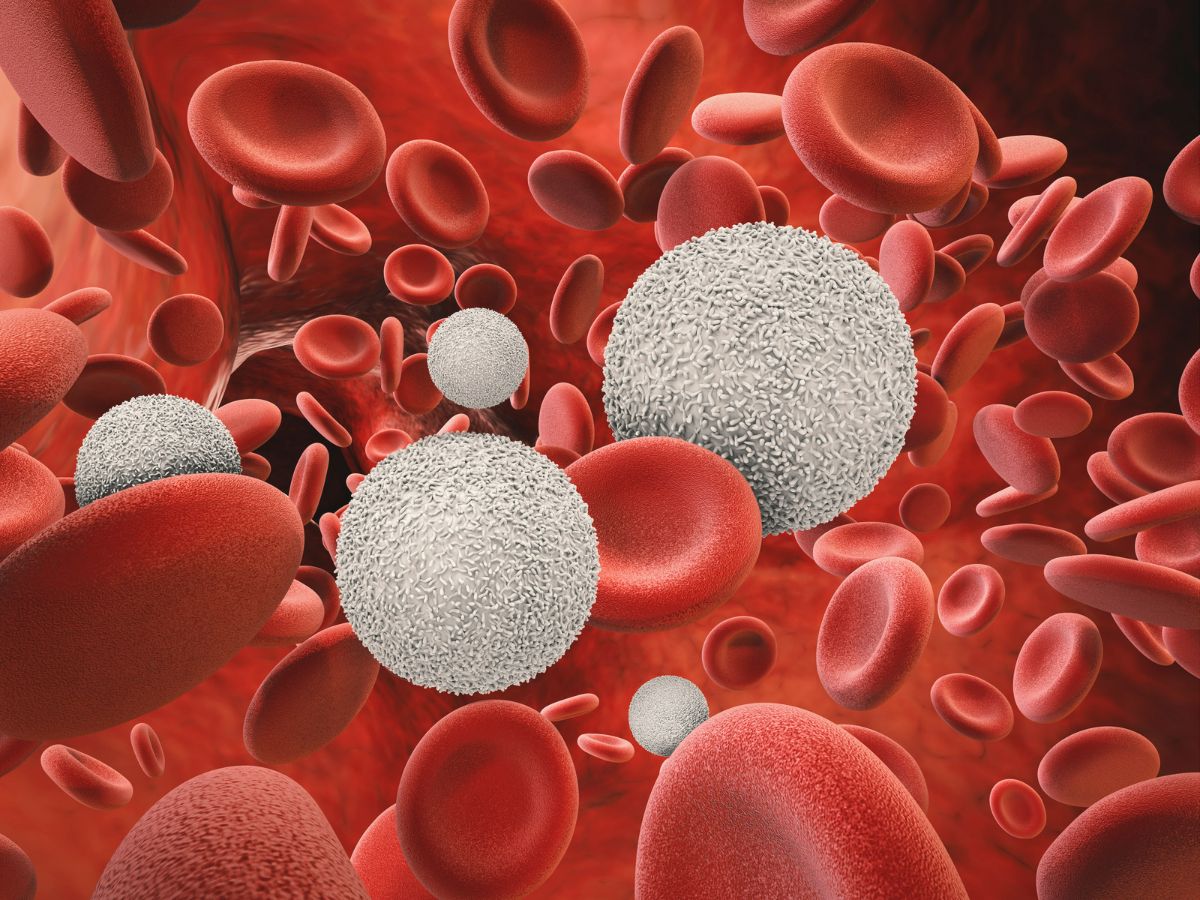Blood-Based Biomarkers and Liquid Biopsies in Cancer Treatment: Precision Oncology Approaches and Strategies

Fluid biopsies offer a less invasive approach to assessing patient condition and tracking the progress of certain cancers. Blood-based biomarkers in particular can be used for the diagnosis of cancer, cardiovascular disorders, and neurodegenerative conditions. Biomarkers UK 2023 featured two stellar presentations exploring some of the different applications of biomarker strategies in precision oncology within the context of liquid biopsies.
Blood-Based Biomarkers: Liquid Biopsy for ctDNA Analysis
Liquid biopsy has previously been described as a revolution in cancer diagnostics and management. It offers an alternative to the traditional surgical biopsy, following the recognition that tumours shed DNA, circulating tumour cells, and other cellular components into the patient’s blood. These cellular components carry the footprint of the tumour from which they are derived.
Tim Aitman is the Director of the Centre for Genomic and Experimental Medicine within the MRC Institute of Genetics and Molecular Medicine at the University of Edinburgh. He believes that circulating tumour (ct) DNA has a potential role across the entire cancer journey from early diagnosis and stratification of treatment, minus residual disease prediction.
- Overcoming obstacles to biomarker usage in precision medicine
- How can biomarker screening approaches benefit from AI?
- Refining patient selection approaches with immune checkpoint inhibitors
“As well as the commercial interest, you can see there’s been an exponential increase in the number of academic studies and in liquid biopsy as a whole,” said Aitman. “Or you just focus on what has been diagnostically the most important aspect of liquid biopsy, which is cell-free DNA.” This has become an enormously popular area in terms of scientific discovery and publications, something partially attributable to the power of cell-free diagnosis and analysis.
If residual ctDNA is detected in a patient’s blood, there is a huge increased relative risk of cancer occurrence or progression. “It makes sense if you still have tumour DNA in circulation two to three months after a primary treatment, it has to be coming from somewhere,” said Aitman. “The likelihood is that the primary treatment has not removed all traces of cancer.”
How ctDNA Tests Can Shape Future Treatment
The relative risk associated with the detection of residual tumour DNA post-operation has seen the increased adoption of ctDNA tests, both commercially and privately. Some cancers shed more DNA than others, which means they can be considered as easier targets for cell-free analysis. However, with early cancers – stage one cancers in particular – the proportion of tumours for which ctDNA can be reliably detected is much lower than for stage 3 or 4 cancer.
Discussing a project underway in his Edinburgh lab, Aitman explained that head and neck cancers fall into two categories: those that are associated with human papillomavirus, or HPV, and those that are not. Patients with HPV positive disease have a much more favourable outlook than patients with HPV negative disease. “One of the advantages of the HPV positive disease is that there is a single biomarker, and that has been taken advantage of in a number of labs, including our own,” said Aitman.
Discussing the concordance of DNA extraction and testing for the immunohistochemistry marker P16, Aitman disclosed that between two-thirds and three-quarters of the patients within their series were HPV-positive for one or more of the HPV serotypes. “The overwhelming majority of patients who were positive by our assay were also positive by immunohistochemistry.” Overall, the results yielded a 93% concordance rate between Aitman’s team’s assay and immunohistochemistry approaches.
Due to low ctDNA concentrations, most ctDNA studies and assays have had greatest success with high ctDNA-secreting cancers or late-stage cancer. “Circulating DNA was discovered in 1948, and it wasn’t really until the early 2000s that people realised it might be a biomarker because it was present at such low concentrations,” said Aitman. Particularly in early-stage cancers, the proportion that is tumour-derived is often less than 1% or 0.1%.
Circulating Tumour Cells as Blood-Based Biomarkers of Cancer
Across all use cases, the purpose of precision medicine is to deliver the right drug to the right patient at the right time. For early cancer diagnosis, a repeat sample is needed to accurately assess the nature and severity of the cancer in question. The current standard for cancer diagnosis is tissue biopsy, although this procedure is very invasive for the patient. Additionally, the cancer may metastasize to the bone or to other parts of the body.
Yong-Jie Lu, Professor in Molecular Oncology at the Barts Cancer Institute and the Barts and London School of Medicine and Dentistry at Queen Mary University of London, works in the cancer biomarker field around liquid biopsy for cancer diagnosis and precision medicine. Most commonly, cancer patients die of a tumour metastasis rather than because of the tumour itself. Circulating tumour cells, or CTCs, are the seeds for cancer metastasis.
“We do not always detect the presence of cancer cells, but we have the prognosis added to link CTCs to aggressive cancer,” said Lu. Here, CTCs can act as indicators of cancer state and advancement, helping to inform treatment in precision medicine approaches. Lu discussed the use of CellSearch in assessing colorectal, breast, and prostate cancer and clinical use.
“We know CTCs from cancer cells contain genomic information,” said Lu. “We can analyse individual CTCs to see tumour heterogeneity. We can use this to predict the treatment response, and that overexpression can be predicted.” CellSearch has been developed based on a single biomarker approach to capture CTCs, working with the knowledge that CTCs can be captured for testing. “Currently, there’s no specific cancer biomarker which exists across all the cancer cells, so different CTC capture devices have been developed,” Lu added.
Applying Parsortix to CTC Populations
Some of the main criteria used to capture CTCs, investigating their presence and populations included cell size and deformability. Blood samples are directed through a microscopic bottleneck which captures CTCs, separating them out from red and white blood cells. “Because we use a cell size and deformability-based measure, we can see mesenchymal CTCs,” said Lu. “Because during cancer metastasis, cancer cell can change from epithelial to mesenchymal phenotype, we use relevant cell markers to separate out the CTC subtypes.”
A key application of this approach concerns using CTC analysis to assist in diagnosing clinically significant prostate cancers, with applications in both diagnosis and prognosis. In this context, CTCs may be used as blood-based biomarkers for the stratification of treatment. Another leading hypothesis is that post-radical prostatectomy (post-RP) prostate cancer recurrence and metastasis is caused by micro-metastasis. This micro-metastasis can be determined by CTC analysis, meaning that a CTC test may be a means of predicting post-RP treatment failure.
Lu explained that the University of London had a program funded by Prostate Cancer UK which aimed to use CTC to predict surgery outcomes, monitoring the advance of localised prostate cancer and the efficacy of its removal through surgery. “As I mentioned, there can be micro-metastases which can remain after surgery and cause a relapse. We want to see if we can use CTCs to predict this.” Being able to accurately monitor the behaviour and residual presence of prostate cancer cells in this way would have major implications for the future of treatment decision and monitoring recurrence.
Future Applications of Liquid Biopsy in the Clinic
As it stands, genome-based diagnostics are rapidly expanding into clinical applicability, with avenues for major commercial opportunity centred around blood-based biomarkers further down the line. Liquid biopsy has great potential in early diagnosis, patient stratification, and diagnosing minimal residual disease and disease progression. Additionally, long-read single-molecule sequencing has great potential for the diagnosis of hard-to-diagnose patients with rare disease. Blood is a rich source for biomarker development, and CTCs are increasingly proving themselves to be valuable in cancer diagnosis, prognosis and treatment prediction.
Want to learn more about the applications of fluid biomarkers? Head over to our Biomarkers portal for the latest news on advances in the field and insights from the industry’s best and brightest. If you’d like to learn more about our upcoming Biomarkers US conference, visit our event website to download an agenda and register your interest.







_1.jpg)